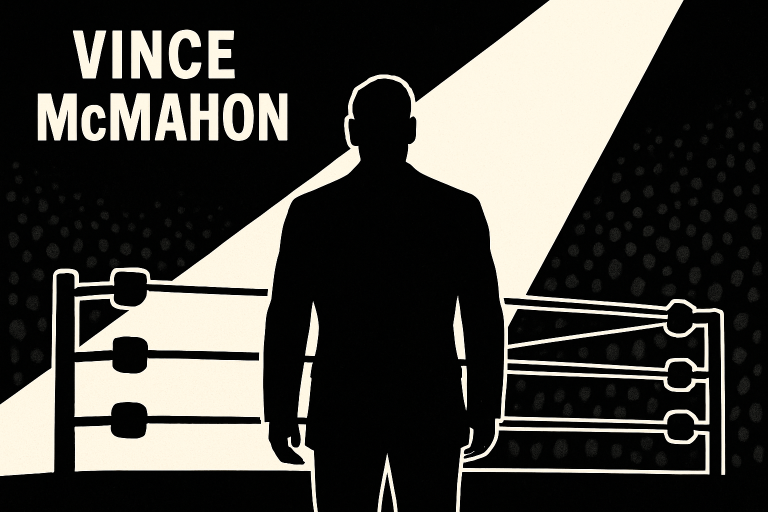Key Takeaways:
- Significant contributions and controversies mark Vince McMahon’s history with WWE.
- Speculation about his return raises questions about potential impacts on WWE’s creative direction and business operations.
- Industry experts and fans are divided on the benefits and drawbacks of McMahon’s possible comeback.
Table of Contents
- Vince McMahon’s Legacy in WWE
- Recent Developments and Speculations
- Industry Perspectives on a Potential Return
- Potential Impacts on WWE’s Creative Direction
- Business Implications and Stakeholder Reactions
- Fan Sentiment and Community Response
- Legal Considerations and Corporate Governance
- Conclusion
Vince McMahon’s Legacy in WWE
The name Vince McMahon is synonymous with the evolution of modern professional wrestling. As the architect behind WWE’s global ascent, McMahon transformed what once was a regional business into a billion-dollar enterprise. His vision manifested in creating major events such as WrestleMania, which redefined sports entertainment and established WWE as a household name. McMahon’s understanding of media trends enabled WWE to reach international audiences, and his knack for developing compelling storylines left an indelible mark on pop culture.
McMahon also built a talent pipeline that cultivated some of wrestling’s most legendary figures, from Hulk Hogan to The Rock. His strategies around pay-per-view events and television syndication built the foundation for WWE’s massive brand recognition. Yet, his tenure was not without controversy, creatively and organizationally, which has continued shaping public perceptions of his leadership.
Recent Developments and Speculations
The relationship between McMahon and WWE has been tumultuous in recent years. After retiring in 2022 amid misconduct allegations, McMahon returned in January 2023 as executive chairman. He aimed to lead WWE through major business negotiations, including pivotal media rights discussions and considering strategic alternatives, such as a potential sale. These moves signaled his enduring influence and the polarizing nature of his leadership. The boardroom shakeup prompted debates among investors, executives, and creative staff, many of whom questioned what McMahon’s presence would mean for WWE’s future direction.
Industry reports and statements from longtime associates further fueled this speculation. Some credited McMahon’s bold style for WWE’s past successes, while others cautioned that his traditional approach might clash with today’s wrestling landscape’s evolving, audience-driven nature. For recent developments and the underlying business context, readers can explore deeper insights from publications such as Sports Illustrated.
Industry Perspectives on a Potential Return
The wrestling industry is divided about the implications of McMahon’s possible return to a significant operational role. For example, WWE Hall of Famer Teddy Long has been vocal in acknowledging that a comeback could happen, but would not be straightforward. Long emphasizes that a large-scale move involving McMahon would require financial strength, industry support, and a careful navigation of legacy supporters and critics within the WWE structure.
Other experts point to the increased scrutiny with McMahon returning, as both Wall Street and corporate partners would expect increased accountability. The consequences of such a change could significantly affect everything from booking philosophies to public perception, and even negotiation leverage with major platforms like Peacock and Fox Sports.
Potential Impacts on WWE’s Creative Direction
At the core of the speculation is how McMahon’s involvement could redirect WWE’s creative momentum. Historically, he was known for introducing larger-than-life characters and aggressive storytelling, hallmarks of the “Attitude Era” and other groundbreaking periods in wrestling history. While this approach yielded enormous ratings and lucrative merchandising, it also drew criticism for a lack of adaptability and, at times, a resistance to modern, fan-led trends.
In recent years, WWE creative has become noticeably more collaborative, relying on a team of writers and producers to adapt to shifting audience preferences. A McMahon resurgence may push WWE back into a more singular creative vision, potentially disrupting ongoing narratives and impacting how new talent is developed and presented to fans.
Analysis from reputable wrestling news sites, such as Sports Illustrated, underscores the industry-wide intrigue around how such a return could reshape WWE’s storytelling.
Business Implications and Stakeholder Reactions
From a financial standpoint, the potential comeback carries both risks and rewards. McMahon’s leadership could inject confidence among traditional investors, especially those who credit him for WWE’s long-run profitability and innovation in live event promotion. However, ongoing controversies present new risks, including public relations issues, renewed calls for transparency, and possible hesitance among sponsors. This is particularly relevant following the high-profile merger of WWE and UFC into TKO Group Holdings, which has intensified discussion about the future of sports entertainment conglomerates.
The reaction among stakeholders, from front-office executives to talent and sponsors, is nuanced. While some welcome a return to McMahon’s proven business instincts, others stress the importance of maintaining progress since his retirement, particularly in diversity, modernizing storytelling, and protecting wrestler welfare.
Fan Sentiment and Community Response
WWE’s dedicated fanbase remains deeply split over the possibility of McMahon regaining significant creative or executive control. For longtime fans, his return signifies a possible reboot of the energy and spectacle of earlier eras, especially the much-revered “Attitude Era.” There’s hope McMahon’s hands-on style could recapture some of the unpredictability that made WWE a cultural juggernaut.
Conversely, a large segment of the audience fears that a return could mean regression in talent development and disregard for innovative storytelling that the current era has championed. Online forums and social channels reflect this lively debate, as fans use their platforms to advocate for their preferred vision of WWE’s future.
Legal Considerations and Corporate Governance
Any operational shift involving McMahon would have to contend with serious legal obstacles and the expectations of modern corporate governance. Following past allegations and high-profile settlements, WWE’s leadership must strictly comply with organizational ethics and regulatory standards. Public companies, especially those as visible as WWE, face increased governance scrutiny in the wake of executive controversies, requiring clear protocols for transparency and accountability.
Protecting shareholder trust and demonstrating an ongoing commitment to lawful business conduct would be essential, especially as WWE navigates its new era as part of TKO Group Holdings. As outlined in recent business analyses from CNBC, this is a shared concern on Wall Street and in the offices of major television and streaming partners.
Conclusion
The speculation around Vince McMahon’s possible return to WWE leadership underscores larger questions about the evolution of sports entertainment, the balance between innovation and tradition, and the impact of executive behavior on corporate legacy. While McMahon’s influence is undeniable, the prospect of his comeback is fraught with complexity—touching on creativity, business, and legal risk.
As WWE continues to build on its legacy within a competitive global marketplace, the choices made by its highest leaders will determine not only its creative output but also its reputation and value for years to come. Industry watchers, fans, and stakeholders alike remain vigilant, knowing that any return by McMahon could mark either a new chapter of success or fresh rounds of debate about wrestling’s future.






